Paul Levinson's Blog: Levinson at Large, page 231
January 4, 2017
Frequency 1.10: The Clarinet of Time
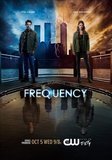 Just three more episodes of Frequency after tonight's 1.10, and the vice of time travel and paradox is beginning to tighten - nicely for the narrative, painfully for our heroes.
Just three more episodes of Frequency after tonight's 1.10, and the vice of time travel and paradox is beginning to tighten - nicely for the narrative, painfully for our heroes.Raimy is more keenly aware than ever of how any change in the past, done to make the future better, can end up making things much worse. Frank knows this, too. This means that both know that Frank's killing the serial killer to save his beloved wife and Raimy's mother Julie can have horribly unforeseen consequences. Raimy knows this even more acutely than does Frank, because she remembers her mother alive, her father dead, knows that she got her father to survive via her information from the future, and that this somehow resulted in her mother being murdered.
But as in all good Greek and Shakespearean tragedies, Raimy and Frank can't help being commanded to change history, to kill the serial killer, by the demons of their own consciences. It's not that Frequency the television series is anywhere near Greek or Shakespearean tragedy - it's that all time travel stories, when they're well done at all, can't help but tug on those ancient strings.
And though Frequency on TV is by no means great, it does a pretty good job of it. Tonight, for example, Raimy feels the wound of what she thinks she'll lose when Frank changes history. And she kills the serial killer, and tells the cop that it doesn't matter, because she expects her father to kill the killer decades earlier. But in a nice twist, all due to a clarinet in the back seat, that doesn't happen.
Frequency is now set up to really go out on a high note - and who knows, maybe even come back, if not on CW, on some other venue. I'm looking forward to it all.
See also Frequency 1.1: Closely Spun Gem ... Frequency 1.2: All About the Changes ... Frequency 1.3: Chess Game Across Time ... Frequency 1.4: Glimpsing the Serial Killer ... Frequency 1.5: Two Sets of Memories ... Frequency 1.6: Another Time Traveler? ... Frequency 1.7: Snags ... Frequency 1.8: Interferences ... Frequency 1.9: The Wife and the Fiancee
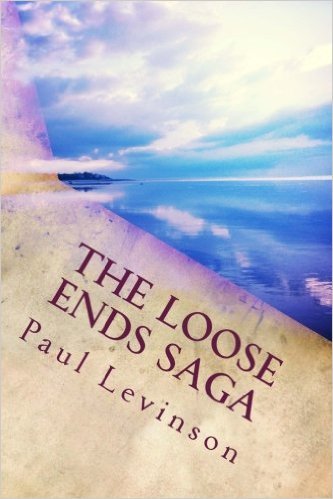
more time travel
Paul Levinson's books ... Paul Levinson's music
Published on January 04, 2017 23:39
Vikings 4.16: Mussulman
 Another outstanding Vikings - 4.16 - tonight, in which Bjorn, Rollo, Floki, and crew reach Spain.
Another outstanding Vikings - 4.16 - tonight, in which Bjorn, Rollo, Floki, and crew reach Spain.This is further than any Viking has ever gone before, as Bjorn says. The people living there are Mussulman, as Rollo and the Europeans from that age call them. The name evolved in English to Muhammadan, Moslem, and today, Muslim.
Rollo also knows that these people worship Allah. Floki soon discovers Allah is a God without a picture, statue, or representation. The pagan Vikings have now encountered not only Christians in their voyages but Muslims.
The Vikings can't help being the plunderers they are. They're delighted with the food, and even more so the harem. Rollo is an interesting, potentially pivotal character here. He's renounced the pagan faith, and the Viking way of life, to live as royalty with his wife and family in France. He's caught up in the traditional Viking way now, but my guess is at some point he'll snap out of it.
The key here, and in the overall story of the the Vikings now, is which approach to strange lands will they take? Ragnar's in England in didn't work out so well. Rollo's in France was much better for him - though not completely satisfying, which is why he went on this mission.
Meanwhile, back in Norway, as they're now calling it, Lagertha is told she'll be killed by a son of Ragnar. The only thing we can know with confidence about this is that the killer won't be Bjorn - because Lagertha is his mother. Otherwise ... well, the death of Ragnar shows we need to take the possibility of the death of major characters more seriously. And that includes Lagertha.
But speaking of death - I don't know, but I wouldn't be totally stunned if we encountered Ragnar wandering around somewhere in England at some point in the future. I wouldn't bet on it, but ... you just never know, when you don't see the character's head literally cut off ...
See also Vikings 4.1: I'll Still Take Paris ... Vikings 4.2: Sacred Texts ...Vikings 4.4: Speaking the Language ... Vikings 4.5: Knives ... Vikings 4.8: Ships Up Cliff ... Vikings 4.10: "God Bless Paris" ... Vikings 4.11: Ragnar's Sons ... Vikings 4.12: Two Expeditions ... Vikings 4.13: Family ... Vikings 4.14: Penultimate Ragnar? ... Vikings 4.16: Close of an Era
And see also Vikings 3.1. Fighting and Farming ... Vikings 3.2: Leonard Nimoy ...Vikings 3.3: We'll Always Have Paris ... Vikings 3.4: They Call Me the Wanderer ... Vikings 3.5: Massacre ... Vikings 3.6: Athelstan and Floki ...Vikings 3.7: At the Gates ... Vikings 3.8: Battle for Paris ... Vikings 3.9: The Conquered ... Vikings Season 3 Finale: Normandy
And see also Vikings 2.1-2: Upping the Ante of Conquest ... Vikings 2.4: Wise King ... Vikings 2.5: Caught in the Middle ... Vikings 2.6: The Guardians ...Vikings 2.7: Volatile Mix ... Vikings 2.8: Great Post-Apocalyptic Narrative ... Vikings Season 2 Finale: Satisfying, Surprising, Superb
And see also Vikings ... Vikings 1.2: Lindisfarne ... Vikings 1.3: The Priest ... Vikings 1.4: Twist and Testudo ... Vikings 1.5: Freud and Family ... Vikings 1.7: Religion and Battle ... Vikings 1.8: Sacrifice
... Vikings Season 1 Finale: Below the Ash

historical science fiction - a little further back in time
Paul Levinson's books ... Paul Levinson's music
Published on January 04, 2017 23:18
The Perversity of Things: review #5 of X: Amateurs vs. Corporations
Continuing with my review (#5 of X) of The Perversity of Things: Hugo Gernsback on Media, Tinkering, and Scientifiction, edited by Grant Wythoff (University of Minnesota Press, 2016). I'm now focusing on pages 28-36 of Wythoff's 59-page Introduction to the 359-page volume, with the proviso that these reviews reflect my not Wythoff's organization of his motherlode of research and analysis.
Wythoff begins this group of pages with a discussion of the important role that women played in creating Gernsback's magazines (recognized by Gernsback) and in the ideal public pressing forward with the technological revolution - a presence which runs contrary to the historical gloss of middle-class young men being the carriers of these ideas, which as Wythoff shows also ignored the role of the working class. But this sociology of science fiction and technocracy soon gives way to a consideration of an issue which is in many ways more fundamental: the tension between talented amateurs and corporate scientists as the spearheads of technological evolution.
Gernsback was clearly a champion of the latter, though Wythoff points out that Gernsback was not allergic to corporate culture, and willing to accept it if it further technological progress. But the most significant part of this section is Wythoff's study of the sheer speed with radio was transformed from an amateur to a corporate endeavor - literally in a handful of years. Not to get too melodramatic about this, but it is almost as if radio's very success, so fervently desired by its first amateur practitioners (who both constructed and listened to radio), spelled the very end of those amateurs, who could not possibly service the millions of Americans who quickly came to love and rely on radio, once its genie of entertainment and news was let out of the bottle.
I'd add here, however, that it's important to note that the amateur impulse, and the great things it engenders, was not extinguished with the corporate co-option of radio in the 1920s. After all, Steve Jobs, Mark Zuckerberg, and the founders of Twitter were none other than amateurs in our own time, and although their revolutionizing inventions have now, too, become corporatized, there is no reason to think the amateur will not spring forth yet again in the future - or right now, though we don't yet quite know about it.
It's too bad that Gernsback didn't live long enough to see the digital revolution which his tinkering in the early days of electronic media presaged. Like McLuhan, Gernsback died a little before the digital age which both foresaw, in different, complementary ways. But their ideas and visions live on, and fortunately in the case of Gernsback, we have Wythoff's The Perversity of Things to carry it forward.
And I'll be back here soon with my next review of this book.
See also: The Perversity of Things: review #1 of X: Gernsback as Philosopher of Technology ... #2 of X: Learning by Doing ... #3 of X: The Evolution of Media ... #4 of X: Gernsback and the The First Amendment
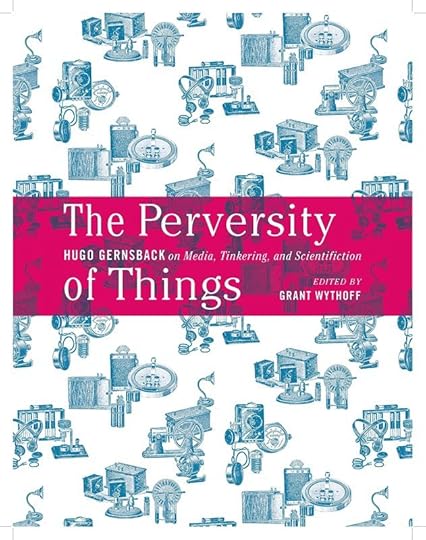 Paul Levinson's books ... Paul Levinson's music
Paul Levinson's books ... Paul Levinson's music
Wythoff begins this group of pages with a discussion of the important role that women played in creating Gernsback's magazines (recognized by Gernsback) and in the ideal public pressing forward with the technological revolution - a presence which runs contrary to the historical gloss of middle-class young men being the carriers of these ideas, which as Wythoff shows also ignored the role of the working class. But this sociology of science fiction and technocracy soon gives way to a consideration of an issue which is in many ways more fundamental: the tension between talented amateurs and corporate scientists as the spearheads of technological evolution.
Gernsback was clearly a champion of the latter, though Wythoff points out that Gernsback was not allergic to corporate culture, and willing to accept it if it further technological progress. But the most significant part of this section is Wythoff's study of the sheer speed with radio was transformed from an amateur to a corporate endeavor - literally in a handful of years. Not to get too melodramatic about this, but it is almost as if radio's very success, so fervently desired by its first amateur practitioners (who both constructed and listened to radio), spelled the very end of those amateurs, who could not possibly service the millions of Americans who quickly came to love and rely on radio, once its genie of entertainment and news was let out of the bottle.
I'd add here, however, that it's important to note that the amateur impulse, and the great things it engenders, was not extinguished with the corporate co-option of radio in the 1920s. After all, Steve Jobs, Mark Zuckerberg, and the founders of Twitter were none other than amateurs in our own time, and although their revolutionizing inventions have now, too, become corporatized, there is no reason to think the amateur will not spring forth yet again in the future - or right now, though we don't yet quite know about it.
It's too bad that Gernsback didn't live long enough to see the digital revolution which his tinkering in the early days of electronic media presaged. Like McLuhan, Gernsback died a little before the digital age which both foresaw, in different, complementary ways. But their ideas and visions live on, and fortunately in the case of Gernsback, we have Wythoff's The Perversity of Things to carry it forward.
And I'll be back here soon with my next review of this book.
See also: The Perversity of Things: review #1 of X: Gernsback as Philosopher of Technology ... #2 of X: Learning by Doing ... #3 of X: The Evolution of Media ... #4 of X: Gernsback and the The First Amendment
 Paul Levinson's books ... Paul Levinson's music
Paul Levinson's books ... Paul Levinson's music
Published on January 04, 2017 16:13
January 3, 2017
William H. McNeill and The Logic of Universal Health Care
With the Republicans chafing at the bit to repeal Obamacare, and replace it with who knows what, I thought it was time to roll out an argument I made in favor of government-financed heath care back in 2008.
It comes from an unlikely source, and he doesn't provide an argument in favor of universal, government supported healthcare himself or per se. But his histories of modern civilization - unusual, anthropological, widely respected - lead to just that.
In two books, both of which I read shortly after they were written, decades ago, William H. McNeill provides the following templates for understanding human history. Throughout our existence as a species, he explains and demonstrates, we humans have done all we could, mustered all the knowledge and technique at our disposal, to counter two kinds of parasites: macro-parasites and micro-parasites.
A macro-parasite is anything in our general size range - wild animals, other humans. Parasitical humans can attack individually, as in someone who murders, robs, or otherwise assaults someone else, or en mass, as when a horde or army or airplane force attacks. In order to counter such attacks, everyone recognizes that we must rely on government - in general, police against individual marauders, military against mass invaders. Even conservatives who want to limit government spending acknowledge and support this need. Only a stone-cold anarchist would deny it.
Micro-parasites, as the name suggests, are bacteria, viruses, and tiny things that make us sick, and can kill us. Most people do recognize that, at very least, the government is needed to help research these illnesses, develop vaccines and cures, etc.
And that is where McNeill's analyses, presented in two books - Plagues and Peoples and The Pursuit of Power - ends.
But I would now add: where is the logic in not extending government support and financing for personal medical care? What is the difference between paying for a police force, and paying for a force of doctors - the first to help protect from macro-parasites, the second from micro-parasites?
I hope Republicans think about this question as they seek to do away with the Affordable Care Act.
Paul Levinson's books ... Paul Levinson's music
It comes from an unlikely source, and he doesn't provide an argument in favor of universal, government supported healthcare himself or per se. But his histories of modern civilization - unusual, anthropological, widely respected - lead to just that.
In two books, both of which I read shortly after they were written, decades ago, William H. McNeill provides the following templates for understanding human history. Throughout our existence as a species, he explains and demonstrates, we humans have done all we could, mustered all the knowledge and technique at our disposal, to counter two kinds of parasites: macro-parasites and micro-parasites.
A macro-parasite is anything in our general size range - wild animals, other humans. Parasitical humans can attack individually, as in someone who murders, robs, or otherwise assaults someone else, or en mass, as when a horde or army or airplane force attacks. In order to counter such attacks, everyone recognizes that we must rely on government - in general, police against individual marauders, military against mass invaders. Even conservatives who want to limit government spending acknowledge and support this need. Only a stone-cold anarchist would deny it.
Micro-parasites, as the name suggests, are bacteria, viruses, and tiny things that make us sick, and can kill us. Most people do recognize that, at very least, the government is needed to help research these illnesses, develop vaccines and cures, etc.
And that is where McNeill's analyses, presented in two books - Plagues and Peoples and The Pursuit of Power - ends.
But I would now add: where is the logic in not extending government support and financing for personal medical care? What is the difference between paying for a police force, and paying for a force of doctors - the first to help protect from macro-parasites, the second from micro-parasites?
I hope Republicans think about this question as they seek to do away with the Affordable Care Act.
Paul Levinson's books ... Paul Levinson's music
Published on January 03, 2017 18:53
Sense8 2.1-2: The Mental, the Digital, and the Palpable
 I caught the first two episodes - Christmas special - of Sense8, Season 2, on Netflix last night. Thoroughly enjoyable and thought-provoking - just like the first season.
I caught the first two episodes - Christmas special - of Sense8, Season 2, on Netflix last night. Thoroughly enjoyable and thought-provoking - just like the first season.Among the best scenes, as in the first season, are the all-eight events, including in the two new episodes, a birthday celebration (all eight in the cluster have the same birthdate), a Christmas celebration, and an eight-person orgy. All were moving - especially the Christmas celebration, topped off with a beautiful rendition of the recently late Leonard Cohen's "Hallelujah". Christmas scenes are difficult to do in an original way, but Sense8 did this quite memorably (that is, in an un-trite and emotionally powerful way).
The fight scenes were also good, as also in the first season. These scenes, in which members of the cluster with martial arts skills take over the fight of someone else in the cluster who doesn't quite have them, are a fresh perspective to martial arts gambits and are always welcome to see.
The science in the story was furthered, too, with Jonas helpfully explaining that, for sense8s, memories are transmitted along with genetic material to offspring. This gives sense8s a valuable cognitive connection to the past, in addition to members of their cluster.
The main threat remains Mr. Whispers, who now has an in with Bill. Fortunately, Whispers, though despicably powerful, is not without some flaws, which Bill, aided by Riley and the others, may be able to exploit. Riley and Will are now the most interesting couple in the group, because, as they both say as they physically hug each other, they're now able to hold in their arms what they previously had held only in the minds.
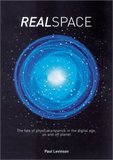 That, in effect, captures the essence of the series - the intersections of the mental (throw in digital, too) and the palpable physical, and I'm looking forward to more in May.
That, in effect, captures the essence of the series - the intersections of the mental (throw in digital, too) and the palpable physical, and I'm looking forward to more in May.See also Sense8: Vibrant, Profound, Dangerous
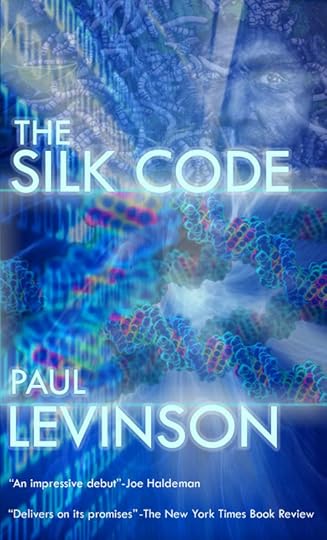
another kind of human species
Paul Levinson's books ... Paul Levinson's music
Published on January 03, 2017 15:12
The Perversity of Things: review #4 of X: Gernsback and the First Amendment
Continuing with my review (#4 of X) of The Perversity of Things: Hugo Gernsback on Media, Tinkering, and Scientifiction, edited by Grant Wythoff (University of Minnesota Press, 2016), this time focusing on pages 26-28 of Wythoff's 59-page Introduction to the 359-page volume, because it tells us that Gernsback was a staunch opponent of government regulation of the nascent radio medium.
So I now have a third area of strong agreement with Gernsback and his work, joining science fiction and media theory: Gernsback not only understood the evolution of media, but got that we should not let the ham-handed government and its penchant for regulations get in the way of that.
Had I known that, I certainly would have mentioned Gernsback in my Flouting of the First Amendment 2005 keynote address - a central part of which is that the Federal Communications Act of 1934 and the FCC it created was a hindrance not a help to the evolution of broadcasting, and violated the First Amendment. Wythoff again deserves credit for bringing Gernsback into this continuing controversy about how much if any government regulation of media is helpful and constitutional as we move further in the 21st century.
But Wythoff and I don't agree on everything regarding this issue. He notes on page 27 that Gernback's "arguments against hasty legislation ... are very much reminiscent of advocates for net neutrality". But net neutrality, though laudable as an ideal, is usually advocated as a government regulation - in other words, an example of the very kind of government meddling in the evolution of media that Gernsback was so eloquently and knowledgeably against. Wythoff is no doubt right that Gernsback the tinkerer would have been no fan at all of today's huge media corporations, but Gernback's often repeated contempt for and fear of government intervention in media development would have made him even less a fan of an FCC induced net neutrality as a way of limiting corporate power. (My Why I Oppose Net Neutrality summarizes my opposition, pre-Gernsback and Wythoff.)
I would add here that underlying my and Gernsback's opposition to government regulation is not only an understanding of media evolution, but an optimism that this evolution by and large leads to good and better things. This optimistic outlook, as Wythoff makes clear and I mentioned in previous reviews of The Perversity of Things, is also the basis of Gernsback's hopeful science fiction - in the tradition of Jules Verne, contradicted by the dystopian science fiction of Aldous Huxley and George Orwell, furthered in cyberpunk which was and is specifically scathing about media evolution, in the latter part of the 20th century and the present (and, being a not 100% Gersnbackian, I've occasionally written a little of, I'll admit).
Wythoff goes on to describe the McLuhanesque "global village" that Gernsbach's "new minted citizens of the ether" (Wythoff's apt term) comprised - a development which didn't quite turn out the way Gernsback intended and predicted, and just because of government interference, which I'll look at it my next review.
See also: The Perversity of Things: review #1 of X: Gernsback as Philosopher of Technology ... #2 of X: Learning by Doing ... #3 of X: The Evolution of Media

Paul Levinson's books ... Paul Levinson's music
So I now have a third area of strong agreement with Gernsback and his work, joining science fiction and media theory: Gernsback not only understood the evolution of media, but got that we should not let the ham-handed government and its penchant for regulations get in the way of that.
Had I known that, I certainly would have mentioned Gernsback in my Flouting of the First Amendment 2005 keynote address - a central part of which is that the Federal Communications Act of 1934 and the FCC it created was a hindrance not a help to the evolution of broadcasting, and violated the First Amendment. Wythoff again deserves credit for bringing Gernsback into this continuing controversy about how much if any government regulation of media is helpful and constitutional as we move further in the 21st century.
But Wythoff and I don't agree on everything regarding this issue. He notes on page 27 that Gernback's "arguments against hasty legislation ... are very much reminiscent of advocates for net neutrality". But net neutrality, though laudable as an ideal, is usually advocated as a government regulation - in other words, an example of the very kind of government meddling in the evolution of media that Gernsback was so eloquently and knowledgeably against. Wythoff is no doubt right that Gernsback the tinkerer would have been no fan at all of today's huge media corporations, but Gernback's often repeated contempt for and fear of government intervention in media development would have made him even less a fan of an FCC induced net neutrality as a way of limiting corporate power. (My Why I Oppose Net Neutrality summarizes my opposition, pre-Gernsback and Wythoff.)
I would add here that underlying my and Gernsback's opposition to government regulation is not only an understanding of media evolution, but an optimism that this evolution by and large leads to good and better things. This optimistic outlook, as Wythoff makes clear and I mentioned in previous reviews of The Perversity of Things, is also the basis of Gernsback's hopeful science fiction - in the tradition of Jules Verne, contradicted by the dystopian science fiction of Aldous Huxley and George Orwell, furthered in cyberpunk which was and is specifically scathing about media evolution, in the latter part of the 20th century and the present (and, being a not 100% Gersnbackian, I've occasionally written a little of, I'll admit).
Wythoff goes on to describe the McLuhanesque "global village" that Gernsbach's "new minted citizens of the ether" (Wythoff's apt term) comprised - a development which didn't quite turn out the way Gernsback intended and predicted, and just because of government interference, which I'll look at it my next review.
See also: The Perversity of Things: review #1 of X: Gernsback as Philosopher of Technology ... #2 of X: Learning by Doing ... #3 of X: The Evolution of Media

Paul Levinson's books ... Paul Levinson's music
Published on January 03, 2017 13:06
January 2, 2017
The Perversity of Things: review #3 of X: The Evolution of Media
Continuing with my review (#3 of X) of The Perversity of Things: Hugo Gernsback on Media, Tinkering, and Scientifiction, edited by Grant Wythoff (University of Minnesota Press, 2016), having now read pages 18-27 of Wythoff's 59-page Introduction to the 359-page volume:
Reading Wythoff's Introduction, as I've already said, is to encounter a wealth of information on every page, and occasionally a treasure-trove at that. On page 25, for example, Wythoff tells and shows us how Gernsback thought about media in ways a lot like Marshall McLuhan, and understood them and their impact on our lives in similar ways. Then, on the same page, we find that Gernsback had a special interest in the evolution of media, in particular how old and new media compete for survival. Wythoff observes that, in "Is Radio At a Standstill?" (1926), "Gernsback makes a striking media-historical analogy between the supposed threat that the rise of radio posed to established phonograph manufacturers and the impact of 'battery eliminator' radio sets" on "conventional battery manufacturers," concluding that "competing formats do not replace but rather force one another to find their own unique attributes, simply as a matter of survival."
As fate would have it, this was exactly one of the main points I made in my PhD dissertation, "Human Replay: A Theory of the Evolution of Media," which I sent up to Marshall McLuhan in the summer of 1978, before I gave it my dissertation adviser at New York University, Neil Postman. (Here is a recording of McLuhan's initial response, in a voice-mail he sent me, shortly later, after he had read "the first 100 pages".) The way I put it in my dissertation - and in subsequent works, such as The Soft Edge: A Natural History and Future of the Information Revolution - was that the media we invent compete for a place in the satisfaction of our human needs, or a "human/media ecological niche". They often achieve this in surprising ways. Radio not only survived but thrived in the aftermath of television, because it worked in our ecological niche of hearing without seeing (we can easily close our eyes, it grows dark every night, etc). But silent movies did not survive the advent of talkies, because we rarely see without hearing (we have no earlids, etc).
 Now, when I wrote that dissertation in the late 1970s (which will soon appear in translation by Wu Jianzhong in China), I of course knew about Gernsback, but as the founding editor of Amazing Stories and one of the founding parents of science fiction. One of the values of Wythoff's extraordinary work is precisely that it calls attention to other, equally important and interrelated, contributions of Gernsback. (I did manage to quote from Tom Swift and His Photo Telephone, 1914, by the pseudonymous Victor Appleton, in my dissertation - but only because I picked up a copy of that book at used book store.)
Now, when I wrote that dissertation in the late 1970s (which will soon appear in translation by Wu Jianzhong in China), I of course knew about Gernsback, but as the founding editor of Amazing Stories and one of the founding parents of science fiction. One of the values of Wythoff's extraordinary work is precisely that it calls attention to other, equally important and interrelated, contributions of Gernsback. (I did manage to quote from Tom Swift and His Photo Telephone, 1914, by the pseudonymous Victor Appleton, in my dissertation - but only because I picked up a copy of that book at used book store.)As a parting point for this review/musing, this section of the book also highlights Gernsback's sponsorship of illustrations in his magazines to the tell science fiction stories - in some ways, more effectively than the words, In age in which cinema was just getting started, and television was a few years off, the illustration was the prime vehicle for our imaginative vision, and all that it could convey. Gernsback, in that sense, was also a founder of the great and continuing tradition science fiction we see so prominetly on the screen.
And I'll be continuing these reviews soon.
See also: The Perversity of Things: review #1 of X: Gernsback as Philosopher of Technology ... #2 of X: Learning by Doing

Paul Levinson's books ... Paul Levinson's music
Published on January 02, 2017 14:21
Sense8: Vibrant, Profound, and Dangerous
 I binged the first season of Sense8 from 2015 the past few nights. I started watching the December 2016 special, but seeing as how the first season is a remarkable narrative in itself, I thought I'd review it now, and come back with a review of the 2nd season preview in a few days.
I binged the first season of Sense8 from 2015 the past few nights. I started watching the December 2016 special, but seeing as how the first season is a remarkable narrative in itself, I thought I'd review it now, and come back with a review of the 2nd season preview in a few days.Remarkable - and welcome - Sense8 was. Telepathic connections used to be a big theme in science fiction through the 1950s, but for some reason hasn't made much of an appearance in the past 50 years. Sense8 does a great job of this, and presents a story that not only needed to be told on screen rather than page, but over 12 episodes rather than a few-hour movie.
The story - of eight people around the world, in their 20s (all born at the same instant), who suddenly discover they are telepathically connected, and then find that elements of the rest of humanity are hunting and trying to exterminate them - has roots in the late lamented Heroes. But that series had many heroes with many different powers, and, given the limitations of traditional network television (NBC), we saw very little of the world on those screens.
Netflix has liberated all kinds of storytelling, and the world panorama it affords Sense8 provides a literally vivid and pulsating environment for the story, which takes place not only in the United States, but Iceland, India, Africa, South Korea, London, and Germany. And not only do we get a vibrantly rainbow mix of nationalities and cultures in Sense8, but a portrayal of just about every mutually consenting sexual activity, presented with sensitivity, style, and humor.
The different talents of the eight sense8s become the basis of the action sequences, with each of the eight characters being available to contribute her or his talents - martial arts, medical knowledge, computer savvy, etc - via telepathic input when another is in danger or dire need. These rescuing visitations, even though we come to expect them, remain surprising and satisfying through the ending. And there's much more than fight scenes in Sense8 - one of the most memorable, indeed in all of television, is a scene in which one of the sense8s is singing, and the others are hearing and joining in in their own ways around the world. To describe this almost seems corny; to see it is beautiful and breathtaking.
The deeper metaphysics or science fictional premises of the story are plausible and well handled well. We are correctly told, at a crucial point in the story, that just as only a fraction of our DNA separates humans from chimps, so a fraction could engender the difference between sense8s and the rest of us humans.
Sense8 is a creation of J. Michael Straczynski and the Wachowskis (Lana and Lilly), and their best work in years. Highly recommended for a different, bright and colorful and profound and dangerous, kind of science fiction.

another kind of human species Paul Levinson's books ... Paul Levinson's music
Published on January 02, 2017 10:56
January 1, 2017
The Affair 3.6: The Wound
 Well, we finally got confirmation in The Affair 3.6 tonight that Noah is hallucinating - he certainly wasn't rescuing his younger self in that lake by the house his father left for him in Pennsylvania.
Well, we finally got confirmation in The Affair 3.6 tonight that Noah is hallucinating - he certainly wasn't rescuing his younger self in that lake by the house his father left for him in Pennsylvania.The question is: how much else of what we've seen happening to Noah regarding his stalking by the person we assume to be Gunther, the prison guard, really happened, or was a product of Noah's drug-bathed brain?
Applying Occam's Razor, one thing we know isn't an hallucination is the wound on Noah's neck. But ... could it have been self-inflicted? Presumably the docs in the hospital and therefore the police would know that, so I guess we're safe in assuming that Noah didn't do that to himself.
Which brings us back to who did? His French friend discovered him, so unless she's a complete psycho, it's not her. No one else that we know has a motive, other than Cole, but even that seems a stretch at the point in time in which Noah was stabbed.
So, back to Gunther. What happened? He stabbed Noah, and has been laying low since then, not following Noah around as Noah is likely hallucinating? In an interesting twist or connection, we also learn tonight that Gunther comes from right near Noah's father's house - so Gunther's story about growing up where Noah did is true, which made him for a moment the likely culprit tonight (Helen was watching Noah hold Gunther under the water), until we discovered at the end of Noah's segment that what was in the lake was all in Noah's mind.
An interesting whodunnit. As I said in my review of first episode this season, we have a good successor to who killed Cole's brother. Meanwhile, the scene of Noah and Martin getting close was a rare heartwarming moment in this story, and Helen's half hour was emotionally taut and jagged as it always is, too.
See also The Affair 3.1: Sneak Preview Review ... The Affair 3.2: Sneak Preview Review: Right Minds ... The Affair 3.3: Who Attached Noah? ... The Affair 3.4: The Same Endings in Montauk ... The Affair 3.5: Blocked Love
And see also The Affair 2.1: Advances ... The Affair 2.2: Loving a Writer ... The Affair 2.3: The Half-Wolf ... The Affair 2.4: Helen at Distraction ... The Affair 2.5: Golden Cole ... The Affair 2.6: The End (of Noah's Novel) ... The Affair 2.7: Stunner ... The Affair 2.8: The Reading, the Review, the Prize ...And see also The Affair Premiere: Sneak Preview Review ... The Affair 1.2: Time Travel! ... The Affair 1.3: The Agent and the Sleepers ... The Affair 1.4: Come Together ... The Affair 1.5: Alison's Episode ... The Affair 1.6: Drugs and Vision ... The Affair 1.7: True Confessions ... The Affair 1.8: "I Love You / I Love You, Too" ... The Affair 1.9: Who Else on the Train? ... The Affair Season 1 Finale: The Arrest and the Rest
podcast review of every 2nd season episode
podcast review of every 1st season episode



the Sierra Waters time-travel trilogy
Paul Levinson's books ... Paul Levinson's music
Published on January 01, 2017 21:03
The Perversity of Things: review #2 of X: Learning by Doing
Continuing with my review (#2 of X) of The Perversity of Things: Hugo Gernsback on Media, Tinkering, and Scientifiction, edited by Grant Wythoff (University of Minnesota Press, 2016), having now read pages 9-17 of Wythoff's 59-page rich (an understatement) Introduction to the 359-page volume: Wythoff tells us that Gernsback advocated what current media studies calls "critical making" - or "a material engagement with technology as a means of understanding it".
This is a key concept, which was actually promulgated at some length and depth by the pragmatic philosopher John Dewey, a contemporary of Gernsback, and author of Experience and Nature (1925), which argued not only that real experience with the world (in today's parlance, hands-on experience) was a good way of understanding it - in contrast to just thinking about it - but the best way of knowing it, and the only likely way to get reliable and reliably testable knowledge. And, indeed, that's precisely the approach I took with my New New Media (2009) - studying what are now much more widely known as social media by using them, adopting them fully into my professional pursuits and life. My Facebook and Twitter accounts, and this very blog, were started in that pursuit.
This anthropological approach to studying our own technologies was the reason gadgetry lived alongside science fiction in Gernsback's publications and work - the two were co-essential, mutually catalytic parts of Gernsback's same project: getting us, more of us, and better informed, into the future.
Wythoff's Introduction at this point commences a more traditional biography of Gernsback, though there's almost nothing traditional in his life's work or the way Wythoff presents it. I was interested in such tidbits as Gernbach's father in Luxembourg made his money as a wine wholesaler. This provides another instance of the connection I've noticed between wine and the evolution of media, the most outstanding example of which is Gutenberg's use of the wine press and its interchangeable grape crushers in his development of the printing press and its interchangeable type, a crucial step beyond the static printing block technology invented in China.
I also didn't know - though maybe that's just me - that Lewis Mumford, ultimately a caustic critic not only of technological progress but many other things I hold dear, ranging from McLuhan's ideas to the need of our species to get beyond this planet into space, was first published, at 15 years of age, in Gernsbach's Modern Electrics, in the very same issue that carried the first part of Gernsbach's celebrated "Ralph 124C 41+". (That issue was published in 1911. Mumford was still at least even-handed about technology when his important Technics and Civilization was published in 1934, where I first got to know his work. By the time of his publication in the two-part Myth of the Machine at end of the 1960s - Technics and Human Development and The Pentagon of Power - Mumford had become an implacable critic of the modern technological enterprise. He thought he had seen the light, but I always thought he had gone over to the Dark Side of thinking about technology.)
And I'll conclude this second review, with a promise for more, by noting that Wythoff offers us these spark plugs for thought by employing the possibilities of the printed page in a way that McLuhan would have admired, given his War and Peace in the Global Village, The Medium is the Massage, and other books in the late 1960s, where the image and the photograph were always in surprising relationships with the words on the page. On page 17, for example, we find a part of a page from Modern Electrics intruding on the top of the page, with a newspaper clipping from the time intruding on the Modern Electrics page, all because the copy of Modern Electrics which Wythoff perused at the Princeton University Library actually had this clipping attached. The Perversity of Things, in other words, not only has soaring and in-depth writing, but a layout to match it.
See also: The Perversity of Things: review #1 of X: Gernsback as Philosopher of Technology

Paul Levinson's books ... Paul Levinson's music
This is a key concept, which was actually promulgated at some length and depth by the pragmatic philosopher John Dewey, a contemporary of Gernsback, and author of Experience and Nature (1925), which argued not only that real experience with the world (in today's parlance, hands-on experience) was a good way of understanding it - in contrast to just thinking about it - but the best way of knowing it, and the only likely way to get reliable and reliably testable knowledge. And, indeed, that's precisely the approach I took with my New New Media (2009) - studying what are now much more widely known as social media by using them, adopting them fully into my professional pursuits and life. My Facebook and Twitter accounts, and this very blog, were started in that pursuit.
This anthropological approach to studying our own technologies was the reason gadgetry lived alongside science fiction in Gernsback's publications and work - the two were co-essential, mutually catalytic parts of Gernsback's same project: getting us, more of us, and better informed, into the future.
Wythoff's Introduction at this point commences a more traditional biography of Gernsback, though there's almost nothing traditional in his life's work or the way Wythoff presents it. I was interested in such tidbits as Gernbach's father in Luxembourg made his money as a wine wholesaler. This provides another instance of the connection I've noticed between wine and the evolution of media, the most outstanding example of which is Gutenberg's use of the wine press and its interchangeable grape crushers in his development of the printing press and its interchangeable type, a crucial step beyond the static printing block technology invented in China.
I also didn't know - though maybe that's just me - that Lewis Mumford, ultimately a caustic critic not only of technological progress but many other things I hold dear, ranging from McLuhan's ideas to the need of our species to get beyond this planet into space, was first published, at 15 years of age, in Gernsbach's Modern Electrics, in the very same issue that carried the first part of Gernsbach's celebrated "Ralph 124C 41+". (That issue was published in 1911. Mumford was still at least even-handed about technology when his important Technics and Civilization was published in 1934, where I first got to know his work. By the time of his publication in the two-part Myth of the Machine at end of the 1960s - Technics and Human Development and The Pentagon of Power - Mumford had become an implacable critic of the modern technological enterprise. He thought he had seen the light, but I always thought he had gone over to the Dark Side of thinking about technology.)
And I'll conclude this second review, with a promise for more, by noting that Wythoff offers us these spark plugs for thought by employing the possibilities of the printed page in a way that McLuhan would have admired, given his War and Peace in the Global Village, The Medium is the Massage, and other books in the late 1960s, where the image and the photograph were always in surprising relationships with the words on the page. On page 17, for example, we find a part of a page from Modern Electrics intruding on the top of the page, with a newspaper clipping from the time intruding on the Modern Electrics page, all because the copy of Modern Electrics which Wythoff perused at the Princeton University Library actually had this clipping attached. The Perversity of Things, in other words, not only has soaring and in-depth writing, but a layout to match it.
See also: The Perversity of Things: review #1 of X: Gernsback as Philosopher of Technology

Paul Levinson's books ... Paul Levinson's music
Published on January 01, 2017 11:56
Levinson at Large
At present, I'll be automatically porting over blog posts from my main blog, Paul Levinson's Infinite Regress. These consist of literate (I hope) reviews of mostly television, with some reviews of mov
At present, I'll be automatically porting over blog posts from my main blog, Paul Levinson's Infinite Regress. These consist of literate (I hope) reviews of mostly television, with some reviews of movies, books, music, and discussions of politics and world events mixed in. You'll also find links to my Light On Light Through podcast.
...more
- Paul Levinson's profile
- 342 followers



